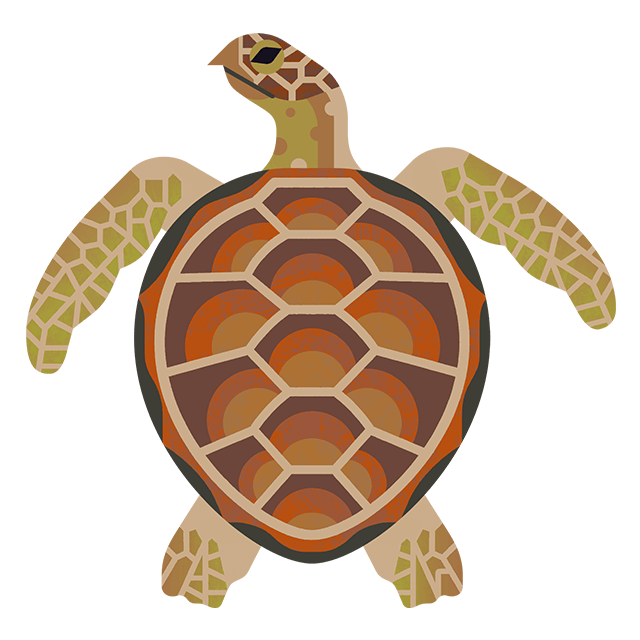
Freedom, heartbreak and the ancient forces of Montserrat
5 minute read
We're part of an exciting project on the island of Montserrat, one of the UK’s Caribbean Overseas Territories, working with local communities to help recover and manage turtle populations.
Key Marine Conservation Society team members Dr Peter Richardson, Head of Ocean Recovery and Amdeep Sanghera, UK Overseas Territory Officer, are currently working on the island of Montserrat as part of an important project to support the recovery of local turtle populations.
Over the course of the project they'll be providing us with updates from the island - and sharing some of the beautiful moments they experience whilst supporting local organisations and communities with their work.
This blog post comes from Dr Peter Richardson, Head of Ocean Recovery, Marine Conservation Society
Almost a week out of quarantine and it feels like a month – in a good way – we have met so many kind people, seen so many turtles and experienced, for the first time, volcanic landscapes that have ignited powerful emotions.

Credit: Nicola Weber
First days of freedom
On the first day of freedom, after our negative PCR test results came through, the key local partner Chief Fisheries Officer Alwyn Ponteen took us on a quick tour south to nearby Foxes Bay on the edge of the volcano-safety exclusion zone.
Foxes Bay is a turtle nesting beach in a sweeping bay and we had eyed it impatiently from our accommodation during quarantine. It was mid-morning and the black, volcanic sand was hot underfoot. As we suspected when scanning the beach through binoculars each morning that week, there were several fresh turtle tracks, all made by large female green turtles seeking a place to dig a nest and lay their eggs. Some had nested successfully too - the season had definitely started!
We then drove back along a rise on our way out of the exclusion zone and were confronted by the heart-breaking, devastated landscape of the abandoned capital Plymouth sprawling down the foothills to the sea. We had all seen pictures of the once thriving town after it was smothered in ash and rocks from volcanic eruptions in the mid-1990s, but to see the extent of the crushing destruction laid out in front of you was utterly gut-wrenching.

Mount Soufriere, Montserrat
Credit: Nicola Weber

Adult male green turtle, Isle's Bay, Montserrat
Credit: Amdeep Sanghera
Swimming with turtles
The next morning the team decided to get into the sea in Isles Bay – it had been tempting us every hot day during quarantine. Each morning during those restricted days we could also see several pairs of mating turtles close inshore in the bay, and we were keen to see if we could snorkel with them.
The water was clear and calm, shallow over a seabed of black sand mixed with boulders that had washed down the now ash-filled Belham River and into the bay during the landslides and mudflows immediately after the eruptions 26 years ago. A few small orange corals were trying to encrust the algae-covered boulders, and shoals of reef fish brightly flickered and flashed blues, purples, reds, yellows and greens to add a little colour to the dark volcanic seascape. But the turtles were amazing – and huge.

Mating green turtles, Isle's Bay, Montserrat
Credit: Amdeep Sanghera

Credit: Peter Richardson
In the first few days we spent several hours in the water with these graceful beauties, and each time I came away enchanted and exhilarated. Sea turtles exert a powerful force on me – I could feel myself healing after months of hardship.
This is going to be a research project unlike any I have experienced before – bring it on!
Next time we’ll tell you about some of the fascinating local people we have started to meet and interview, a boat trip through the volcano exclusion zone and back, and wet nights on sandy beaches waiting for the return of nesting turtles…
Big thanks to the UK government’s Darwin Plus Initiative, the Government of Montserrat and our partners at the University of Exeter. Read more about the project here.



